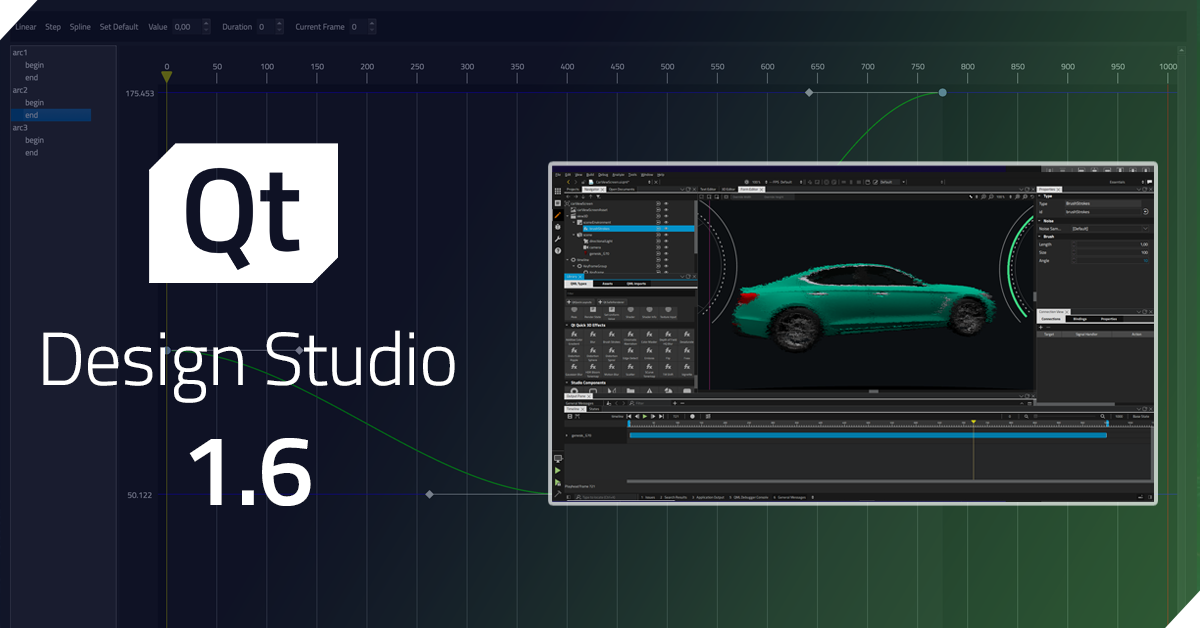
- Qt design studio vs qt creator install#
- Qt design studio vs qt creator android#
- Qt design studio vs qt creator software#
- Qt design studio vs qt creator code#
- Qt design studio vs qt creator plus#
Content providers are implemented as a subclass of.

They have no UI and are implemented as subclasses of.
Qt design studio vs qt creator android#
This is the basic building block of Android applications and is responsible for creating a window. An activity provides an interface for user interaction. Activity Manager: This controls the lifecycle of any activity including management of the activity stack.
Qt design studio vs qt creator software#
Software built on Android will be using more or less the following application services. Android has four basic components, each serving a specific purpose. This allows publishing and sharing of activities, services and data with other applications. The main concept in the Android architecture is component reuse. With its robust Qt Creator IDE, the Qt framework is gaining a foothold in the mobile application development space. Its recent enhancements to mobile platform, particularly Qt Mobility and Qt Quick, are intriguing. The Qt framework is best known for its ease of use and its support for excellent GUI widgets for desktops.
Qt design studio vs qt creator code#
These extensions are implemented by a pre-processor that generates standard C++ code before compilation. Though Qt provides binding for several programming languages such as Python, Ruby and Perl, applications are predominantly written in C++ and enhanced with additional extensions. Qt is a cross-platform framework targeted towards Symbian, Maemo and MeeGo. To run an application written in C or other languages it has to be compiled to native code, can be done with the Android NDK. It has neither a native windowing system nor any support for standard Linux libraries such as GNU C. The Android operating system is based on the Linux kernel but not a Linux OS per se. Device services such as touchscreen and storage are accessed through the Google Services API. However, Android borrowed only language syntax from Java and it does not provide standard APIs such as those found in Java SE and Java ME. Most Android applications are developed in Java and they run in the Dalvik Virtual Machine. In this article, I will compare and contrast the Android and Qt platforms from a developer’s perspective. While Android has gained a stronghold as a rich application development platform for smartphones, Qt with the introduction of Qt Mobility and Qt Quick is nevertheless a strong contender in the arena. And it goes without saying, the packet manager makes it trivial to keep versions up to date.Although the Android and Qt mobile development platforms have architectures that are quite different, they share a common goal in providing a productive framework for developing mobile applications.

Additionally, I'd say MSYS had packages for about 98% of the libraries and tools I've found myself in need of, and those remaining 2% include libraries it had but were not configured in a way, suitable for my use case.
Qt design studio vs qt creator plus#
In fact, the MSVC compiler alone is larger than the entire extensive collection of packages that I adopted for use throughout the years, plus their dependencies, for a total of over 200 packages.

Just for the sake of reference, for VS build tools 2019, the C++ compiler alone takes up about 4.5 gigabytes of space, or about 8 if you just click "C++ build tools" and leave it at the default. Last but not least, you can get MSYS2, which has a repository with MinGW and a ton of ready to use static and dynamic libraries build for it, so you can avoid the arduous and often failure prone build process. Also, If you want to build chromium (a.k.a the QtWebEngine) for windows you have to use MSVC, that's a limitation imposed by google, as they only support building with the platform-native compiler. It is now possible to get the MS compiler without VS, a.k.a MS Build Tools.
Qt design studio vs qt creator install#
Unlike MSVC, which is not even available standalone, you have to install visual studio, which itself installs a bunch of garbage you don't need but can't opt out of. Meaning that you can use the same directives and compile extensions across different platforms.Īlso, MinGW is compact, quick to install, and a version is even bundled with Qt. MSVC is limited to Microsoft platforms, GCC supports pretty much everything, including 8bit embedded CPUs. MinGW uses GCC, and GCC has one significant advantage to MSVC - it is portable.


 0 kommentar(er)
0 kommentar(er)
